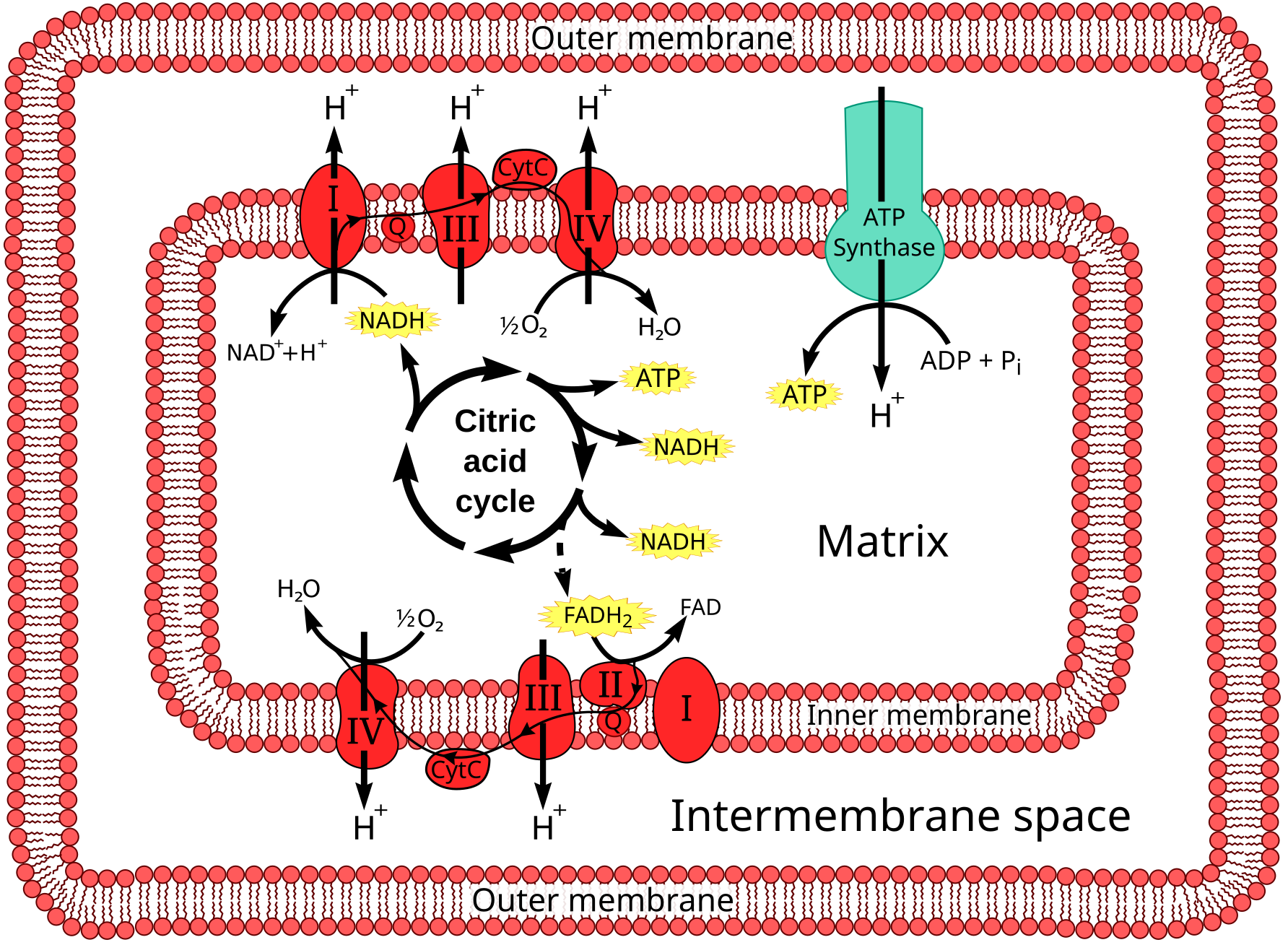Table of Contents
The citric acid cycle (CAC)
Acetyl-CoA enters the mitochondrial matrix where it is used in the Krebs Cycle (aka Tricarboxylic acid cycle (TCA), aka Citric acid cycle). For each pyruvate, there are 2 turns of the cycle where additional NADH and another high energy electron carrier FADH2 (flavin adenine dinucleotide) are generated.
The aerobic reactions occur inside the mitochondria after being fed Acetyl-CoA molecules from the cytoplasmic preparatory reaction.
The aerobic reactions include the Citric Acid Cycle and the oxidative phosphorylation that uses the electron transport chain.
Overview video of the citric acid cycle
Oxidative phosphorylation via the electron transport chain
The Electron Transport Chain (ETC) is a chain of proteins and enzymes embedded in the inner membrane of mitochondria. This is where oxygen is utilized as the final electron acceptor. Reduction of 1/2 O2 results in the generation of a water molecule (chemiosmosis)
The electrons stored by NADH and FADH2 are transferred to proteins called cytochromes that have metal centers for conducting these electrons. In the process of moving these electrons, the cytochromes in this Electron Transport Chains (ETC) power the movement of protons into the intermembrane space. The terminus of these electrons is an O2 molecule that is reduced into 1/2 H2O molecules. This apparent movement of water molecules from the chemical synthesis is termed chemiosmosis.
Summary videos of the electron transport chain
Coupling between the electron transport chain and the ATP synthase
A channel in the membrane called ATP synthase acts as a gateway for the H+ back into the matrix, but use this motion to convert ADP into ATP.
This is an example how passive and active transport are connected.




